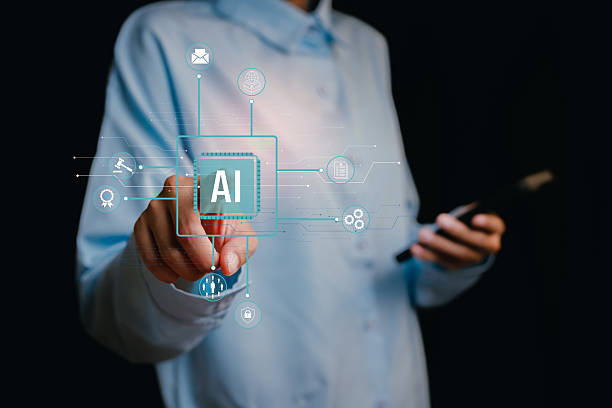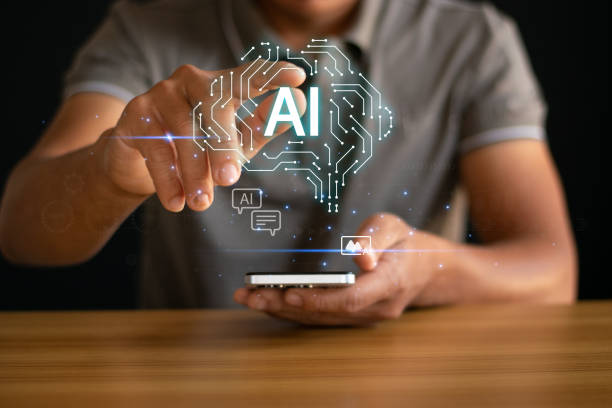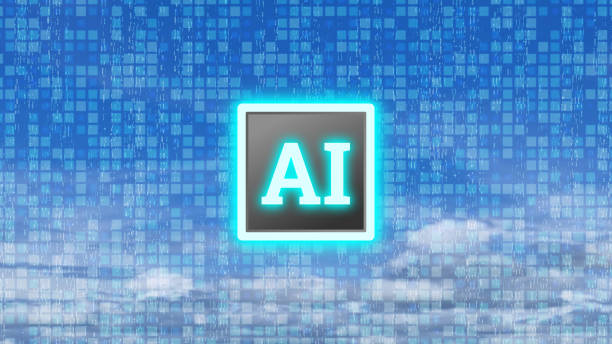What is an AI Robot? Comprehensive Definition and History

What is an AI Robot? Comprehensive Definition and History
#AI_Robot is a combination of two important and popular fields: #Artificial_Intelligence and #Robotics.
In general, an AI robot is a physical or software machine that, using artificial intelligence algorithms, is capable of performing tasks that traditionally require human intelligence.
These tasks can include learning, reasoning, problem-solving, natural language understanding, pattern recognition, and decision-making.
The history of AI robots dates back decades, when researchers were trying to build machines capable of mimicking human cognitive abilities.
Initially, progress was limited, and robots were only capable of performing simple and repetitive tasks.
But with recent advances in fields such as deep learning, natural language processing, and computer vision, AI robots have become significantly more complex and capable.
Today, AI robots are used in various industries, including manufacturing, healthcare, customer service, and transportation.
These robots are capable of performing tasks such as automating production lines, diagnosing diseases, providing 24/7 customer support, and self-driving.
One of the key aspects of AI robots is their ability to learn from data.
Using machine learning algorithms, robots can identify patterns and relationships in data and automatically improve their performance.
This capability allows robots to adapt to new environments and perform more complex tasks.
For example, an AI robot trained to diagnose diseases can continuously improve its diagnostic accuracy by analyzing new medical data.
Artificial intelligence plays a fundamental role in the development of these robots.
Is your current online store design not generating the sales you expect?
Rasaweb specializes in professional online store design!
✅ An attractive and user-friendly site aimed at increasing sales
✅ High speed and security for an ideal shopping experience⚡ Get a free consultation for online store design with Rasaweb!
Main components of an AI robot: a detailed review of hardware and software
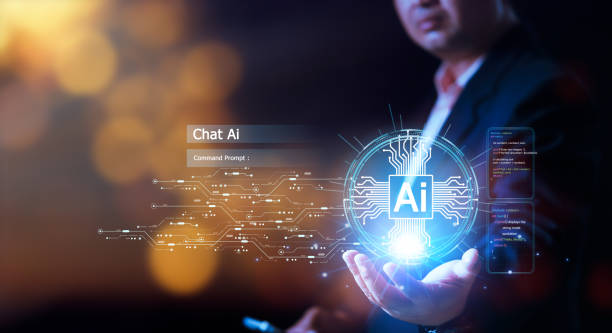
Main components of an AI robot: a detailed review of hardware and software
An #AI_Robot consists of two main parts: hardware and software.
Hardware includes the physical components of the robot, such as sensors, motors, actuators, and processors.
Software includes AI algorithms, control programs, and the robot’s operating system.
These two parts work together to enable the robot to interact with its environment and perform the desired tasks.
Sensors play an important role in collecting information from the surrounding environment.
There are different types of sensors, including vision sensors (cameras), audio sensors (microphones), tactile sensors, and temperature sensors.
These sensors collect information such as images, sounds, pressure, and temperature and send it to the robot’s processor.
The robot’s processor uses artificial intelligence algorithms to process this information and make the necessary decisions.
Motors and actuators are responsible for the robot’s movement and physical activities.
Motors can move the robot, control the robot’s arms and fingers, or operate various tools.
The type of motor used depends on the type of task and the size of the robot.
The software of the #AI_Robot includes artificial intelligence algorithms that allow the robot to learn, reason, and make decisions.
These algorithms can include deep neural networks, reinforcement learning algorithms, and natural language processing algorithms.
The software also includes control programs that control the movement and behavior of the robot.
The robot’s operating system is a basic software that manages the robot’s hardware resources and enables the execution of applications.
Robotics components play a vital role in the overall performance of the robot.
Applications of AI robots in various industries: opportunities and challenges
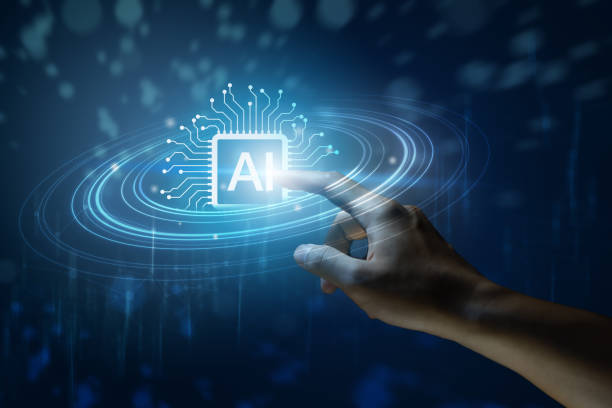
Applications of AI robots in various industries: opportunities and challenges
AI robots have wide applications in various industries and have the potential to create significant transformations.
In the manufacturing industry, AI robots can automate production lines, improve product quality, and reduce production costs.
In the healthcare industry, robots can help doctors diagnose diseases, perform surgeries with greater precision, and improve patient care.
In the customer service industry, robots can answer customer questions, solve their problems, and improve the customer experience.
However, the use of #AI_Robots in various industries also has challenges.
One of the main challenges is the high cost of developing and deploying robots.
In addition, robots may need training and maintenance, and they may also cause some employees to lose their jobs.
To overcome these challenges, companies and organizations need to have a comprehensive strategy for using AI robots and pay attention to training employees and creating new job opportunities.
| Industry | Application |
|---|---|
| Manufacturing | Automation of production lines |
| Healthcare | Diagnosis of diseases |
| Customer Service | Answering customer questions |
AI robots can continuously improve their performance and perform more complex tasks using machine learning and deep learning.
The Future of AI Robots: Predicting Potential Developments and Impacts

The Future of AI Robots: Predicting Potential Developments and Impacts
The future of #AI_Robots is very bright and full of potential.
With continuous advances in artificial intelligence, robotics, and related technologies, robots are expected to become increasingly intelligent, capable, and versatile.
In the future, robots may be able to perform tasks that are difficult to imagine today.
For example, robots may be able to automatically build homes and buildings, travel to space, or even cure incurable diseases.
The impact of AI robots on society and the economy will also be very broad and profound.
Robots may increase productivity, reduce costs, and improve the quality of life.
However, robots may also cause some employees to lose their jobs and raise concerns about security and privacy.
To manage these impacts, governments, companies, and organizations need to have a responsible and forward-looking approach and pay attention to training employees, creating new job opportunities, and developing appropriate laws and regulations.
The future of artificial intelligence requires careful and strategic planning.
One of the important developments in the future of AI robots is the development of social robots.
Social robots are robots that are designed to interact with humans.
These robots can act as companions, assistants, or teachers and help improve people’s quality of life.
Social robots can be used in areas such as elderly care, child education, and helping people with disabilities.
Did you know that 85% of customers check your company’s website before any interaction?
With Rasaweb, build a corporate website that deserves your reputation.
✅ Increased credibility and customer trust
✅ Attracting high-quality leads⚡ Get a free website design consultation
Advantages and Disadvantages of Using AI Robots: A Realistic Look

Advantages and Disadvantages of Using AI Robots: A Realistic Look
The use of AI robots has many advantages and disadvantages that need to be carefully examined.
Among the advantages of using #AI_Robots are increased productivity, reduced costs, improved quality, increased safety, and the ability to perform dangerous and difficult tasks.
Robots can work continuously and without fatigue and reduce human errors.
In addition, robots can be used in dangerous environments such as mines, chemical plants, and nuclear power plants and protect human lives.
However, the use of robots also has disadvantages.
One of the main disadvantages is the high cost of developing and deploying robots.
In addition, robots may need training and maintenance, and they may also cause some employees to lose their jobs.
There are also concerns about security and privacy, as robots can collect and process people’s personal information.
To benefit from the advantages of robots and reduce their disadvantages, it is necessary to take a balanced and responsible approach.
AI ethics should be considered in the development and use of these robots.
Another potential disadvantage is over-reliance on AI robots.
If humans become completely dependent on robots, they may lose their skills and knowledge and face serious problems if there is a problem with the robots.
Therefore, it is necessary for humans to maintain and continuously improve their skills.
How to Build an AI Robot: Step-by-Step Guide
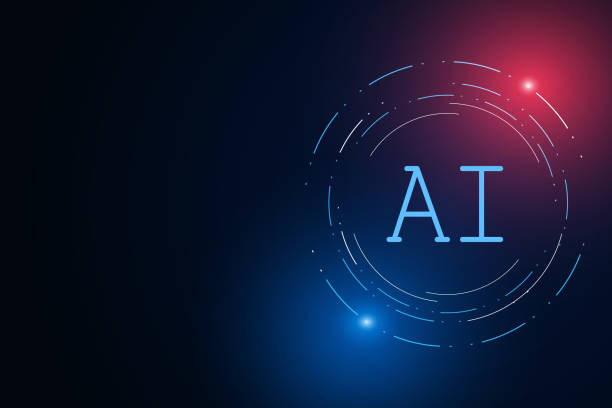
How to Build an AI Robot: Step-by-Step Guide
Building an #AI_Robot is a complex and challenging project that requires knowledge and skills in various fields, including artificial intelligence, robotics, electronics, and programming.
However, by following the step-by-step guide and using the appropriate tools and resources, you can build a simple AI robot.
The first step is to determine the robot’s purpose and define its task.
Before starting to build the robot, you need to specify what task the robot should perform.
For example, should the robot pick up and move an object, follow a path, or interact with humans? After determining the purpose, you need to determine the robot’s technical specifications, including size, weight, speed, and accuracy.
The second step is to choose the appropriate hardware.
The robot’s hardware includes sensors, motors, actuators, a processor, and a power source.
You need to choose hardware that is compatible with the robot’s purpose and technical specifications.
For example, if the robot needs to detect objects, you need to use a high-quality camera.
The third step is to develop the robot’s software.
The robot’s software includes AI algorithms, control programs, and the robot’s operating system.
You need to develop software that allows the robot to interact with its environment and perform the desired tasks.
To develop the robot’s software, you can use programming languages such as Python, C++, and Java.
Robotics programming is an essential skill for this task.
The fourth step is to test and evaluate the robot.
After building the robot, you need to fully test and evaluate it to make sure it works correctly and performs the desired tasks.
If there are any problems, you need to fix them and test the robot again.
Ethical Challenges in the Development and Use of AI Robots
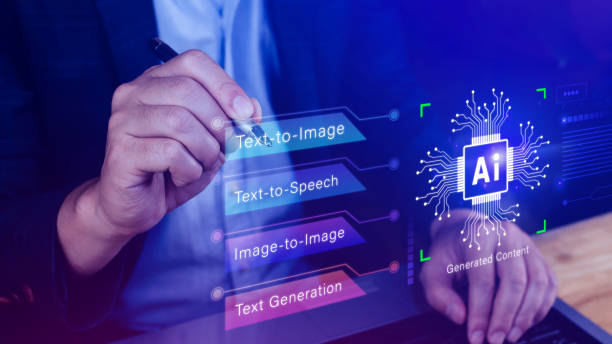
Ethical Challenges in the Development and Use of AI Robots
The development and use of #AI_Robots raises many ethical challenges that need to be taken seriously.
One of the main challenges is accountability for the actions of robots.
If a robot causes damage or harm, who will be responsible? Is the robot’s manufacturer, the robot’s owner, or the robot itself responsible? These questions do not yet have definitive answers and need further review and discussion.
Another ethical challenge is discrimination and inequality.
AI algorithms may unintentionally be discriminatory and cause inequality in opportunities and access to resources.
For example, a facial recognition algorithm may be less accurate in recognizing the faces of people with dark skin.
To prevent discrimination and inequality, it is necessary to carefully review and evaluate AI algorithms and use diverse and comprehensive data to train them.
Bias in artificial intelligence is a serious issue that needs to be addressed.
Another ethical challenge is privacy and information security.
Robots can collect and process people’s personal information, and this information may be misused.
To protect privacy and information security, appropriate laws and regulations need to be enacted and encryption and security technologies need to be used.
Also, it is necessary for people to have sufficient awareness of how their personal information is collected and used.
Comparing AI Robots with Other Types of Robots
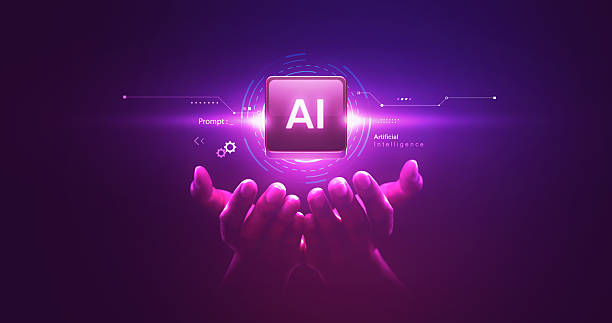
Comparing AI Robots with Other Types of Robots
#AI_Robots have fundamental differences from other types of robots.
Traditional robots are usually designed to perform repetitive and pre-determined tasks and are not capable of learning and adapting to new environments.
In contrast, AI robots, using artificial intelligence algorithms, are capable of learning, reasoning, problem-solving, and decision-making and can adapt to new environments.
One of the main differences between AI robots and traditional robots is their ability to process complex information.
AI robots can collect large amounts of information from various sources and process them simultaneously.
This capability allows robots to make better decisions and perform more complex tasks.
In addition, AI robots can interact with humans and answer their questions.
This capability allows robots to be used in areas such as customer service, education, and healthcare.
While traditional robots simply repeat specific tasks, AI-powered robots are capable of performing complex and diverse tasks.
| Feature | Traditional Robot | AI Robot |
|---|---|---|
| Ability to Learn | No | Yes |
| Ability to Solve Problems | No | Yes |
| Ability to Make Decisions | No | Yes |
Are you tired of your online store having visitors but no sales? Rasaweb solves your main problem with professional online store designs!
✅ Significant increase in sales with targeted design
✅ Perfect user experience for your customers⚡ Get a free consultation!
The Role of AI Robots in Improving the Quality of Human Life

The Role of AI Robots in Improving the Quality of Human Life
#AI_Robots have the potential to improve the quality of human life in various areas.
In the field of health and medicine, robots can help doctors diagnose diseases, perform surgeries with greater precision, and improve patient care.
Robots can also be used in the care of the elderly and people with disabilities and help them perform daily activities.
In the field of education, robots can act as private tutors and help students learn course content.
Robots can automatically correct student assignments and provide them with appropriate feedback.
In the field of transportation, robots can control self-driving cars and reduce accidents and traffic.
Self-driving cars can help people with disabilities and the elderly travel easily to their destinations.
AI robots can help humans in many areas using learning algorithms and neural networks.
In the field of agriculture, robots can help farmers plant, care for, and harvest crops.
Robots can automatically remove weeds and irrigate crops.
The use of robots in agriculture can increase productivity and reduce costs.
Examining Successful Examples of AI Robots in the Real World

Examining Successful Examples of AI Robots in the Real World
In the real world, there are successful examples of #AI_Robots that demonstrate the high potential of this technology.
One of the successful examples is surgical robots, which help doctors perform complex surgeries.
These robots provide doctors with a better view of the surgical site using high-quality cameras and precise tools and allow for more precise surgeries.
Another successful example is customer service robots, which answer customer questions and solve their problems.
These robots can interact with humans naturally using natural language processing and provide accurate answers to their questions.
Warehouse robots are also another successful example of AI robots that are used in warehouses to move and sort goods.
Using routing and navigation algorithms, these robots can automatically move around warehouses and move goods to their desired destination.
AI robots are also used in self-driving cars and help drivers drive more safely.
Tesla uses #AI_Robots to automatically manage its production lines and improve the quality of its products.
Frequently Asked Questions
| Question | Answer |
|---|---|
| What is an AI Robot? | An AI Robot is a machine capable of understanding the environment, reasoning, learning, and making decisions to perform tasks independently. |
| What is the difference between regular robots and AI robots? | Regular robots perform repetitive tasks based on pre-planning, while AI robots can learn from experience, interact dynamically with the environment, and even behave in a way that resembles human intelligence. |
| What are the main applications of AI robots? | They are used in industries (manufacturing, assembly), medicine (surgery, diagnosis), services (customer support, home), exploration (space, underwater), and many other fields. |
| What technologies are used in the construction of AI robots? | Machine Learning, Computer Vision, Natural Language Processing, Deep Learning, and Robotics are among the key technologies. |
| Can AI robots have emotions? | Currently, robots do not have emotions in the human sense. They can identify and react to emotions, but they do not experience emotions themselves. |
| What are the main challenges in the development of AI robots? | Safety, reliability, ethics, autonomy, adaptability to complex environments, and natural interaction with humans are important challenges. |
| How are AI robots trained? | They are usually trained using a large amount of data, machine learning algorithms, and deep learning to identify patterns and make decisions. |
| Examples of AI robots in everyday life? | Smart robotic vacuum cleaners, customer support chat robots, self-driving cars, and surgical robots in hospitals. |
| Are AI robots a threat to human jobs? | Some repetitive jobs may be automated, but at the same time, robots can increase productivity and create new jobs in the development, maintenance, and monitoring of these systems. |
| How is the future of AI robots predicted? | They are expected to become smarter, more autonomous, and capable of performing more complex tasks, and will be in closer interaction with humans in various environments. |
And other services of Rasa Web advertising agency in the field of advertising
Intelligent SEO: An effective tool for user interaction with an attractive user interface design.
Smart custom software: A combination of creativity and technology to increase sales through intelligent data analysis.
Smart UI/UX: A novel service to increase click-through rates by optimizing key pages.
Intelligent link building: A professional solution for digital branding with a focus on precise audience targeting.
Smart brand identity: A professional solution for digital branding with a focus on optimizing key pages.
And more than hundreds of other services in the field of internet advertising, advertising consulting, and organizational solutions
Internet Advertising | Advertising Strategy | Advertorial
Sources
What threats do smart robots pose to the life of the future?
,Who can smart robots with artificial intelligence help?
,Smart robots, applied between growth and improvement
,Smart robots from planning to effects
? To promote your business’s position in the digital world and reach the peak of success, Rasaweb digital marketing agency offers comprehensive and effective solutions. From responsive website design to search engine optimization, get a professional look with us.
📍 Tehran, Mirdamad Street, next to the Central Bank, South Kazerun Alley, Ramin Alley, No. 6

